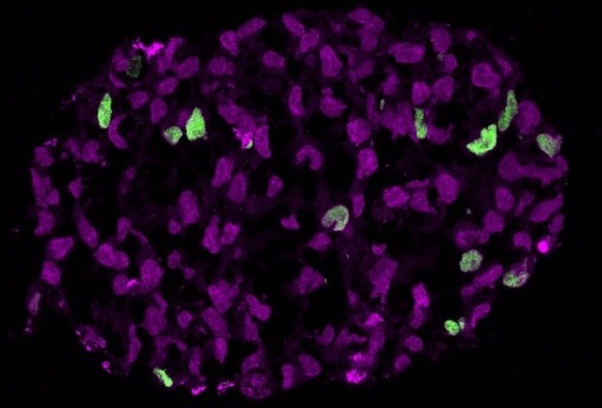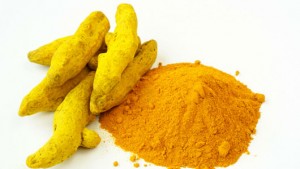In the past, by using the rodent stem cells the researchers had created precursors to egg and sperm called primordial germ cells.
But in a recent development the scientists from the University of Cambridge and the WeizmannInstitute,UK were successful in making these primordial germ cells by using human embryonic stem cells and adult human skin cells.
The green cells in this image of an embryoid are SOX17 positive.
“According to research, the gene called SOX17 plays an important role in transforming human stem cells into PGCs.”
The new advancement opens the door for new treatments for fertility and age-related diseases as per the lead researcher Prof. AzimSurani, of the Gurdon Institute at the University of Cambridge, and his team. The researchers publish their findings in the journal CELL.
The research also highlights significant differences in embryo development between humans and rodents, which signify that the results of studies using mice and rats may not directly apply to humans.
The role of the primordial germ cells (PGCs) which ultimately become the spermsin men and eggs in women is to pass on the genetic information from the parent to the offspring during the process of reproduction.
After the fertilization of egg by the sperm, there is a formation of blastocyst. Some cells in the blastocyst form the inner cell mass, which becomes the fetus. Other cells in the blastocyst form the outer cell wall, which becomes the placenta. The cells in the inner cell mass change into stem cells which are capable of becoming any cell type in the body. Some of these cells turn into PGCs.
First author of the study, Dr. Naoko Irie, also of the Gurdon Institute at the University of Cambridge explains that:
“The creation of PGCs is one of the earliest events during early mammalian development. It’s a stage we’ve managed to recreate using stem cells from mice and rats, but until now few researchers have done this systematically using human stem cells.”
During the course of their study, the team discovered that a gene called SOX17 plays an important role in a process called “specification”which involves transforming human stem cells into PGCs. Earlier it was found that SOX17 is involved in changing human stem cells into endodermal cells, but for PGC specification.
Also the team observed that, the mouse equivalent of the SOX17 gene is not involved in PGC specification. This suggests that there is a major difference between the embryonic development of mice and humans.
“It has highlighted important differences between embryo development in humans and rodents that may mean findings in mice and rats may not be directly extrapolated to humans,” says Dr. Irie.
The team also created PGCs using reprogrammed adult cells, including skin cells. According to them, this process may open the door to research on patient-specific cells, which may increase understanding of infertility, the human germline and germ cell tumors.Also these findings may increase knowledge of inherited epigenetic mutations.
The team brought to the notice another aspect of their findings by saying that this increases the knowledge of how environmental factors like smoking and diet that may affect gene activity can be inherited. The process involved is methylation in which molecules bind to DNA and increase or reduce gene activity. Methylation patterns can be passed on to offspring.
While elaborating on this finding, Prof. Surani says:
“Germ cells are ‘immortal’ in the sense that they provide an enduring link between all generations, carrying genetic information from one generation to the next.
The comprehensive erasure of epigenetic information ensures that most, if not all, epigenetic mutations are erased, which promotes ‘rejuvenation’ of the lineage and allows it to give rise to endless generations. These mechanisms are of wider interest toward understanding age-related diseases, which in part might be due to cumulative epigenetic mutations.”
About Ruchira Dhoke
A qualified medical microbiologist with an avidity to read enchant a deep passion for creating a good impacting masterpiece with my words .I am very fond of good old English literature and like listening to music and paint in my free time.




















